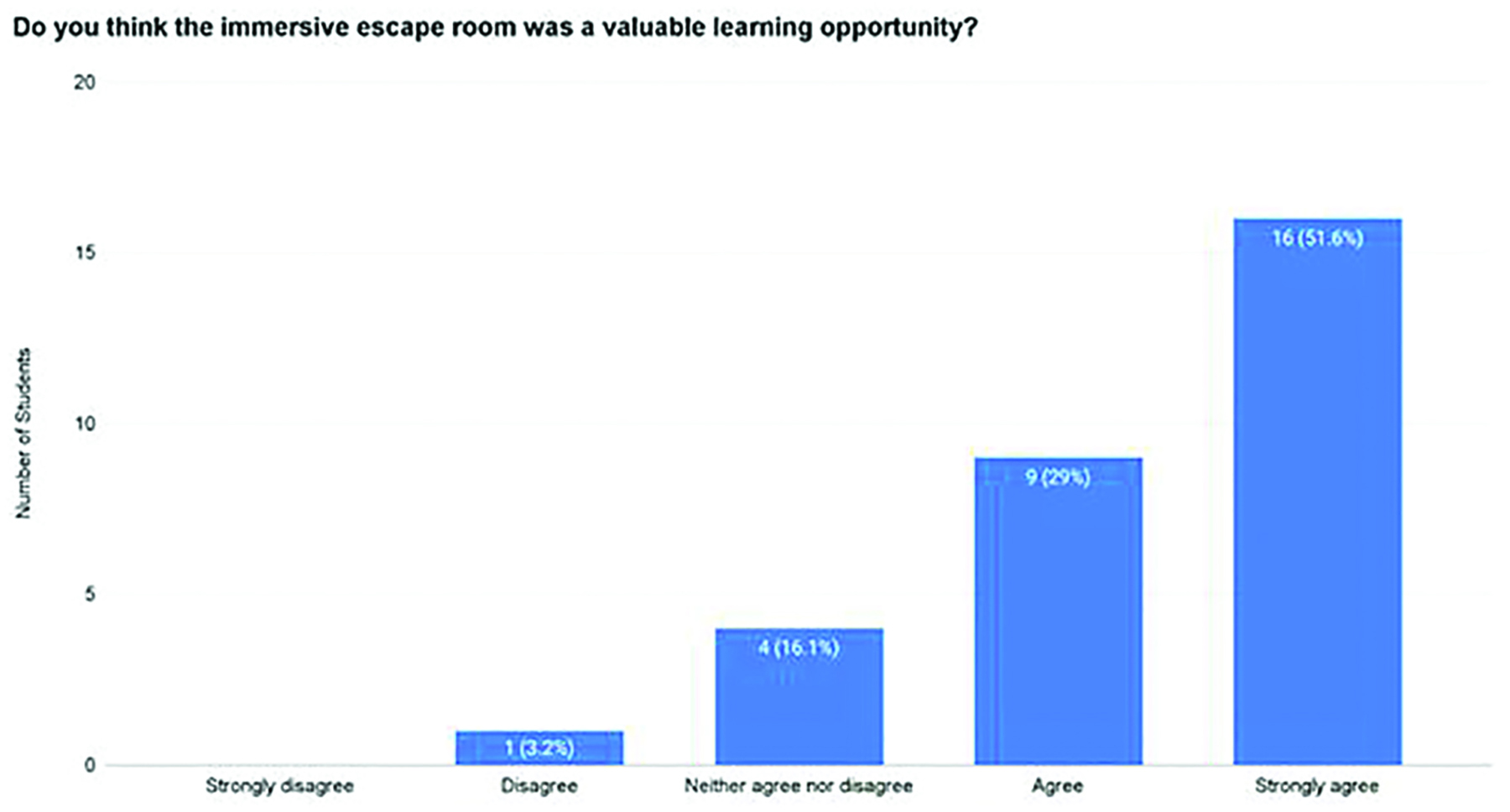
Increasingly adopted in healthcare education for their ability to engage learners, develop teamwork and critical thinking skills, escape rooms are defined as ‘live-action, team-based games where players discover clues, solve puzzles, and accomplish tasks in one or more rooms in order to accomplish a specific goal’ [1]. The literature suggests that escape rooms have the potential to engage learners[2,3]. Our simulation team, consisting of academic and simulation technicians, created a virtual escape room using IntuifaceTM software for our immersive learning environment. This interactive touchscreen experience allowed nursing students to practice critical thinking, communication, and teamwork as they navigated a virtual patient’s home, consisting of a linear storyline of puzzles within a 40-minute limit. These were focused on wound assessment and management.
This learning experience involved groups of up to 12 students, structured with rotating participation of 5-6 active learners, and 5-6 active observers who contributed suggestions and insights. Solving the sequential puzzles demanded effective teamwork, clear communication, and the application of knowledge relevant to the scenario’s phases: history taking, information gathering, the correct utilization of wound assessment tools, and the selection of appropriate wound dressings. A simulation technician facilitated the technical operation, while an academic facilitator guided the in-experience discussions and debriefing to enhance learning.
Feedback was collected from participants at the end of each session via a QR code. A total of 6 sessions were delivered in 1 day. 65 students took part, with 31 completing the evaluation form (response rate of 47.7%). Overall, student feedback indicated a positive learning experience and participants reported high levels of enjoyment and engagement with the activities, with evidence of perceptions of successful teamwork and communication. Additionally, at least one student noted the development of valuable skills such as critical thinking and problem-solving. The unique and fun nature of the session appears to have contributed to this learning opportunity, see Figure 1.
The feedback identified a potential area for improvement which was highlighted by “more time and guidance”, suggesting that some students may have felt pressed for time, or required additional support to fully benefit from the activities. This warrants consideration in future session planning to ensure adequate time allocation and appropriate levels of guidance are provided to accommodate all learners. Despite this point for potential enhancement, the feedback suggests the learning experience was innovative and well-received by the participating students, and will be embedded in future nursing curricula.
As the submitting author, I can confirm that all relevant ethical standards of research and dissemination have been met. Additionally, I can confirm that the necessary ethical approval has been obtained, where applicable.
1. Nicholson S. Peeking Behind the Locked Door: A Survey of Escape Room Facilities [Internet]. 2015. Available from: http://scottnicholson.com/pubs/erfacwhite.pdf. Accessed 10 April 2025.
2. Millsaps ER, Swihart AK, Lemar HB. Time is brain: Utilizing escape rooms as an alternative educational assignment in undergraduate nursing education. Teaching and Learning in Nursing. 2022 Mar;17: 323–327.
3. Lin Hui Quek, Apphia J.Q. Tan, Marcia J.J. Sim, Ignacio J, Harder N, Lamb A, et al. Educational escape rooms for healthcare students: A systematic review. Nurse education today. 2024 Jan 1;132:106004–4.

